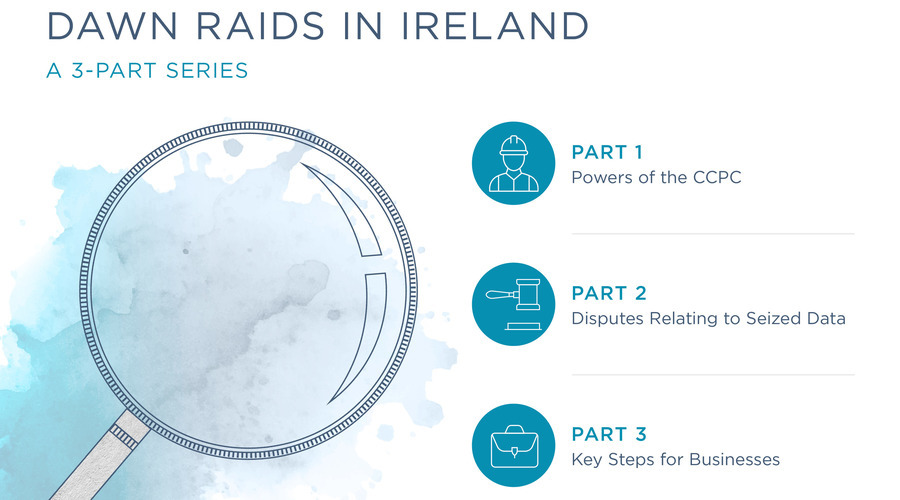Key recommendations on 'revamping' competition from the Draghi Report include:
1. Allowing merging parties to raise an ‘innovation defence’ where they can prove that their merger increases the ability and incentive to innovate: The report suggests updating operating practices and guidelines to allow for an 'innovation defence' which would be justified by the need, in certain sectors, to pool resources to cover large, fixed costs and achieve the scale needed to compete at a global level. However, the merging parties would need to commit to levels of investment that could be monitored ex post, and the defence couldn't be used to justify further concentration by already dominant companies.
2. Providing clear guidance and templates on novel agreements, coordination and co-deployment between competitors: The report highlights the need for a simple, streamlined process that groups of EU industries can follow to collaborate to reach scale when it would benefit consumers (for example, in the joint procurement or production of critical raw materials, or in the development of standardised technology). Moreover, the report calls for further clarification to companies concerned about their liability for potential infringements of competition law.
3. Including a 'security and resiliency assessment' in competition assessments of the European Commission's Directorate-General for Competition (DG COMP), where relevant and in strategic sectors: The report advocates for conducting a 'security and resiliency assessment' where relevant and in strategic sectors. The assessment should be done outside DG COMP (e.g. by a Resiliency Assessment Body) and then used as an input for DG COMP as additional public interest criterion – For example, geopolitical risks in relationships with certain regions or supply chain risks in critical sectors, such as pharmaceuticals or medical supplies, might be relevant. Examples of how the assessment could be operationalised are: (a) if an entrant would make supply more resilient, this could be a positive factor to consider in State aid decisions; and (b) In the case of merger reviews, limiting the potential for a single company controlling key upstream inputs may be directly reflected in the merger analysis. Moreover, in devising remedies, DG COMP ought to aim not to weaken, and, whenever possible, to enhance security and resiliency.
4. Using State aid control as a competition tool for efficiency enhancing industrial policies: The report advocates for returning to 'a normal enforcement' of State aid controls (i.e. post-Covid and most recently, the energy crisis). This implies the strong enforcement of State aid control and the expansion of coordinated aid at EU level to enhance productivity and growth in strategic sectors (for example, in the energy sector). It notes that greater emphasis should be placed on the potential impacts on innovation and resiliency in State aid decisions.
5. Reforming and expanding 'Important Projects of Common European Interest' (IPCEIs) to address the growing innovation gap between the US and EU: IPCEIs are a form of State aid designed to support 'breakthrough' innovation that, due to its cross-border nature, can significantly enhance the competitiveness of the EU. The report recommends broadening the criteria for funding IPCEIs to cover not just 'breakthrough' innovation but also a wider range of innovations in strategic areas where current State aid rules for Research & Development and Innovation are insufficient.
6. Incentivising the adoption of open access and interoperability requirements, and adherence to EU standards: The report recommends expanding open access and interoperability requirements beyond the core platform services currently regulated by the EU's Digital Markets Act. Specifically, State aid review by DG COMP could be linked with the enhancement of open access and interoperable solutions, and EU-wide standards. For instance, State aid towards vehicle charging infrastructure might be considered a determinant positive factor if interoperability standards were made mandatory for those receiving aid. In digital markets, new open access and interoperability requirements should be imposed where competition is impeded by strong network effects and barriers to entry related to data.
7. Applying effectively the new powers associated with the enforcement of the Digital Markets Act and the Foreign Subsidies Regulation: The report notes the importance of the effective application of these new rules. Adequate resources must therefore be dedicated to their enforcement but not at the cost of weaker enforcement of more traditional competition policy tools.
8. Reinforcing ex-post versus ex-ante regulation and monitoring: To ease the enforcement of competition policy, the report suggests that it is reasonable to require merging parties or defendants, as part of the settlement of their competition cases, to report metrics that are useful for evaluating the extent of competition ex post. Competition authorities may then be allowed to intervene based on concerns arising from these reports. To limit the burden on companies, the measure should be limited exclusively to: (i) the cases posing the greatest concerns about future competition, and (ii) the minimum information required to evaluate competition concerns related to what was considered in the ex ante assessment.
9. Introducing a ‘New Competition Tool’ (NCT) to deal with four areas of potential intervention where current competition tools are known to be insufficient: i) tacit collusion; ii) markets where the need for consumer protection is more likely to be needed; iii) markets where economic resilience is weak; iv) past enforcement actions where the information/data received by the authority indicate that the commitments or remedies adopted are not delivering competition. The NCT would involve carrying out a 'Market Study' to identify the problem and then a 'Market Investigation' to determine the solution together with firms to solve it.
10. Accelerating decision-making processes and increasing the predictability of decisions: The report suggests revising competition enforcement to reduce the burden on companies, while also noting that ex-ante regulation like the Digital Markets Act should not become the primary tool to foster competition unless structural impediments to competition, such as those in digital markets, exist. The report also recommends expanding initiatives like the 2023 Merger Simplification Package to all areas of competition policy enforcement, and that certain ambiguities should be clarified by reinforcing guidelines and templates, for example:
A. Which non-notifiable mergers can be reviewed and by which public authority – The report notes that a 'simple solution' to this would be to set a threshold based on the value of the transaction for mandatory notifications, as is done in certain jurisdictions (like Austria and Germany).
B. Which novel cooperative agreements are legitimate.
C. Which types of contracts entails an exclusionary abuse of dominance – The report notes that excessive discretion on the finding of exclusionary abuses is left by the draft Guidelines on the enforcement of Article 102 TFEU released in August 2024. For example, tying can be presumed to have exclusionary effects, but the Guidelines do not detail under which conditions; similarly, there is no 'safe harbour' for dominant firms setting prices above average total cost.
D. Which State aid programmes in line with EU-wide industrial policy are not distortive of competition.
E. Regarding the Digital Markets Act, the provision in Article 1(6.b) about how the Digital Markets Act is without prejudice to the application of national competition rules that “amount to the imposition of further obligations on gatekeepers” – The report notes that this provision introduces uncertainties that need prompt clarifications to limit the risk of the potential of fragmenting the regulatory landscape of EU digital markets.




